We’re reader-supported and may be paid when you visit links to partner sites. We don’t compare all products in the market, but we’re working on it!
Welcome to Solar Power Finder™. Solar has been booming in Australia for quite some time now, with homes and businesses across the country investing in green energy. If you're thinking of solar yourself, you'll want make sure you get a quality system and make the most of it once you have it. You'll also want to compare the right electricity plan that supports your solar system by paying you for excess energy that you produce and feed back to the grid.
How much do solar panels cost?
The cost of installing a solar system can start from $4,000 on the small end and cost up to $20,000 for a larger sized system. It depends on a few things including:
- System size
- Your state
- Any rebates you get back
Upfront cost vs the return you get
A typical 5 kW solar array will cost about $6,000 to install. This could produce around 20 kWh per day.
Are you willing to wait to get a return on your investment?
Depending on where you live, you may be able to save up to $1,500 per year off your power bills through a combination of solar feed in tariffs and relying less on power from the grid.
Add to that any federal or state rebates for installing the system, and you would normally be looking at around 3-6 years for your solar setup to pay for itself.
Case studies: How to avoid a bad installation
We spoke to four different customers about what they learned from their own experiences with solar systems and the installation process. So what do you need to know if you're planning to buy solar?
Before buying: Lot's of research
- Michael poured a lot of energy into the quote process to make sure he'd get the best system with the Victorian solar rebate. He got quotes from 8 different companies, read online reviews, and spent four hours over more than a month discussing systems before settling on G-store, a Victorian state retailer. G-store decided to split the system between the north and west side of the roof based on Michael's usage habits.
During installation: The installer fixed any issues:
- While the installation ran into some problems, including broken roof tiles and leaks, Michael was impressed with the way his installer dealt with it, allocating specific people for specific jobs to get everything fixed up. In the end, he paid $8,200 for a 5 kWh system on a 20 year warranty, and expects to make his money back in 3 years while saving $2,500 annually on bills.
After installation: Switched to a better plan and has actually made money on hot days
- Following the installation, Michael switched to Amber Electric for their wholesale power prices after he saw people tweeting about it online. He says he's made $60 on some hot days by switching off appliances with a 16c/kWh feed-in tariff.
Before buying: Found an installer who looked at his house in a lot of detail
- While Martin had gotten a few solar quotes done over the years, he'd never been happy until he encountered a local retailer, Simmark. They looked at his roof, shading, and usage before coming back with a recommendation for a system size and a quote. The installation itself was straightforward, taking just a couple of days.
After installation: His first bill went from 17kWh to 13kWh per day and is now 9.2kWh per day
- Martin ultimately spent $7,000 on his 6.5 kWh system, which cut his first power bill from 17kWh to 13kWh per day and it now averages out to be 9.2kWh per day. In a quarter his bill has gone from $556 to $319.
During: Bad experience, but using his own knowledge of his house was able to get the right system
- Tom from the ACT had an initially bad experience with his solar panel installation. The salesperson did a great job drawing up a map of his roof and evaluating his usage habits, but Tom had to convince them that the south-west corner of the roof was prone to shading based on his own experience living there. Moving it meant a few extra hours of power production daily.
- Unfortunately the installers were mistakenly given the wrong map, and ended up taking four weeks and breaking some tiles, though they later fixed it.
After installation: His first bill went from $550 to $230
- Overall, Tom spent $5,000 on a 20-panel, 5 kWh system with 10-12 years of factory warranty and cut his power bill down from $550 to $230. He refinanced his house to afford the system, since he considers the financing options from big energy companies to be a rip-off.
- With his new solar system installed, Tom now runs his washer, dryer, and air-conditioner during the day to save on energy, and got an app on his phone so he can track just how much power he's producing and when.
Before installation: Installer was very professional during the installation
- Susan from NSW was satisfied with her solar experience. She called up a specialist who took the time to do a professional evaluation of her house, asking lots of in-depth questions, checking the position of the sun, and using the shadows from adjacent buildings to figure out the best place for the panels.
After installation: Cut her power bill roughly in half
- Susan has a lighting qualification from the University of Technology Sydney (UTS) and found James Wallis Power Installers to do the actual installation after discovering them from work referrals. Happy to dish out for the environment, Susan spent $5,000 on her system and has made it back over the past 3 years by cutting her power bill in half. Now, she says she no longer worries when power prices go up because she has her solar.
Are solar panels a good idea in Sydney?
Solar panels might be a great idea in Sydney if your property fits the criteria and you are willing to make the investment. Learn more and get a solar panel quote.
How to ensure you have a good solar installation
Based on what we learned from our case studies, here are the main things to think about when you're trying to get your solar system actually installed.
Don't rush the quoting process
Before you even begin the quoting process, it's worth taking the time to read reviews of the solar installers you're considering. Positive reviews are great, but also check the negative reviews and see if they involve legitimate problems you might face, or are simply written by angry people.
During the quoting process itself, your installer should be asking about or taking into account your usage habits and the position of the sun and shade during the times you use your energy the most to help choose the best spot for panels. A good installer may even take a look at your electricity bill before moving ahead, and ask quality, detailed questions throughout the process.
Don't overspend
A good installer will survey your house and usage habits and come back with a recommendation for panel size based on your needs. Have a good idea of how much power you might actually require: some installers may try to upsell you on panels, but make sure they have made that recommendation based on your actual usage. If they upsell you straight away, then it could be a red flag.
Find a CEC approved installer
Ensure that you're using a CEC approved provider so that you're eligible for the solar rebate. While the rebate is shrinking from year to year, it's still extremely relevant: our case studies ended up spending between $5,000 and $8,000 after the rebate had been applied. The rebate depends on the size of your system and where you live, but usually tallies a couple of thousand dollars.
Ask about warranties
Like anything else, solar systems and their various components have a limited lifespan, so warranties are a must. You should look for warranty both on the products (factory warranty) and from the installer for the job. It's always worth calling back when you have a problem.
Warranties seem to be around ten years or so at least, though you might have to weigh that up against the chance of your installer going bust if you have the work done by a small company. You can also cover your solar panels with your home insurance for a bit of extra protection against damage.
Make the most of your solar after it's installed
Once you actually have your new system set up, there's a few things you can do to make the most out of it.
Install a smart meter
A smart meter allows you to track your solar power production and energy use throughout the day. Many energy retailers offer complimentary installation of smart meters for solar users when you sign up. Once you have a meter, there are apps from many retailers and other providers you can install on your phone to track usage on the go.
Consider time of use
Since solar panels are active during the day, consider changing your usage habits to suit. One of our users found that they saved money by running their washer and dryer during the daytime, when they could take advantage of their own generated power. Unless you have a battery, you'll only be able to directly use your solar power during the day.
Hunt for good feed-in tariffs
Energy companies pay solar feed-in tariffs for each kWh of power you feed into the grid, with the rate depending on where you live and what power plan you have. Some retailers will offer the bare minimum required by law, while others will offer big tariffs in exchange for higher usage rates. It's worth shopping around for an energy plan that offers a nice balance between feed-in tariffs and usage rates, which you can do using our energy comparison tool.
While saving your solar power to feed it back into the grid may be tempting given the existence of feed-in tariffs, you're much better off using it wherever possible instead of purchased electricity. You may earn about 10c/kWh pushing it back into the grid, but you'll likely save around 20c/kWh or more for each unit of power you don't buy from your retailer.
1. What rebates and incentives are there for solar power?
There are three main rebates that exist to encourage people to switch to solar power: federal rebates, state government rebates, and feed in tariffs.
- Federal rebates. The federal government will reimburse you for installing your solar system, with more powerful systems attracting larger rebates. These incentives take the form of small-scale technology certificates that are worth about $40 individually, explained here. The rebate is set to decrease annually until it hits zero in 2030, so the sooner you install solar the better.
- State government rebates. These are rebates provided by individual state governments to assist with increasing the number of solar users. Current subsidies for solar panels are provided by the Queensland and Victorian governments, while help with the cost of battery installation is available in Queensland, Victoria, the ACT, and South Australia.
- Feed in tariffs. Solar feed in tariffs are provided by your energy retailer, who will refund you a certain amount per kWh of excess solar energy you feed back into the grid. Tariffs vary widely by state and power plan, but typically run somewhere between 5 - 21c/kWh. Feed in tariffs are particularly useful when you don't use as much power as you produce or have a solar battery to feed energy back into the grid over time.
2. How does your property impact whether you should get solar?
Almost anybody can benefit from installing solar panels, but there are some important factors that will affect how much.
- Panel orientation. Since we live in the southern hemisphere here in Australia, you'll get the most sunlight with north-facing panels. Even if your roof doesn't have a north face, east and west facing panels will still produce a fair amount of electricity during the morning and afternoon, respectively.
- Panel angle. This is a relatively minor factor, but having panels around the same angle as your latitude helps maximise power output. For a flat roof, panels can be mounted to achieve an incline.
- Panel temperature. Hotter panels are less efficient. Higher quality panels will deal with heat better.
- Shading or obstruction. The less sunlight that reaches your panels, the less effective they'll be. Microinverters and power optimisers can help generation if some of your panels get blocked during the day.
3. What types of solar systems can I buy?
| Type | Description | Who is it for? |
|---|---|---|
| Grid-tied | The most common system. Power is used from your panels before it's used from the grid. Does not provide power at night. | Most consumers. These are a way to cut down power bills, boost the green level of your energy, and pay themselves off the fastest. |
| Hybrid/battery-ready | Hybrid systems function the same as grid-tied ones except they have backup batteries for the system to function at night. Battery-ready systems are hybrid systems where a battery has not been installed yet, but can be in the future. | People who want a bit more independence from the power grid, or like to have power stored for emergencies. |
| Off-grid | Completely disconnected from the grid. Off-grid systems are far more expensive and function through solar panels and a number of backup batteries. | Owners of properties that are too expensive to connect to the electricity grid. |
4. Is it worth getting a battery?
Buying a solar battery is tempting because it offers you quite a bit more freedom from the power grid as well as giving you a power store to draw upon in emergencies. The issue with solar batteries is that they're extremely expensive (starting at around $10,000) and will only pay themselves off in 10 years plus for the typical household, far longer than the 3-6 years of a grid-tied system.
Batteries may be worth it if you're planning to stay at a property for a very long time and enjoy greater power independence. The good news is that solar batteries are getting cheaper all the time, and you can set up a battery-ready system now and buy it later when the price has dropped.
5. Inverters: what are they and why do you need them?
Inverters are electrical components that convert the DC current produced by solar panels into AC power that can be used by your electrical appliances and such. Without an inverter, most of your devices would be unable to function off of the DC power produced by the panels.
The only thing a hybrid inverter changes is that it allows for conversion in both directions, so that it can both charge and drain a solar battery.
6. How can I pay for my solar system?
There are many ways to finance your solar panel system:
- Cash. If you can afford to pay upfront, it will save you having to pay any extra interest on a loan as well as invest your money in a system that has a relatively good return on investment after the first few years.
- Green loans. A green loan is a low-interest loan offered by a financial institution with an interest in renewable investment. You should be able to find one with generous and flexible repayment options over 1 to 7 years.
- Home mortgage. Adding onto your home mortgage will likely only give dividends if you plan to pay more than the minimum repayments. Compare the cost of a long-term home loan against the cost of a short-term solar loan.
- Rent to own. Under this scheme, the company which leases the system to you owns it until you pay it off. This sort of buy now pay later scheme seems to amount to a no-interest loan but often comes with a substantially higher price built into the cost of the system.
- Power Purchase Agreements (PPA). A PPA means you get a solar system installed for no upfront cost, but pay for the electricity it produces as if were being sold to you by the power company (though usually at a lower rate). While this may seem like a good deal, you are generally contractually obligated to buy a minimum amount of power from the company, even if you don't need or want it.
- Personal loan. A regular loan with higher interest rates than a green loan or home mortgage. Some lenders may take into account what you're planning to use the money for and offer you lower rates because of it, and it leaves you in a situation where you're not beholden to a particular retailer or installer.
7. Are solar panels worth it if I'm not home during the day?
The answer to this is probably yes, due to the fact that solar feed in tariffs are much more generous than they were a few years ago. On top of the fact that you likely still use some percentage of electricity during daylight hours no matter when you're out, thanks to fridges and other static appliances.
As far as tariffs go, the electricity your solar panels are generating during the day that you aren't using will be fed directly back into the grid, earning you a refund on your energy bill that's much higher than it would be a few years ago. In addition, if you are investing in a solar battery, any energy you don't use during the day can be saved for later use or fed back into the grid in the same way.
Frequently asked questions?
Latest solar headlines
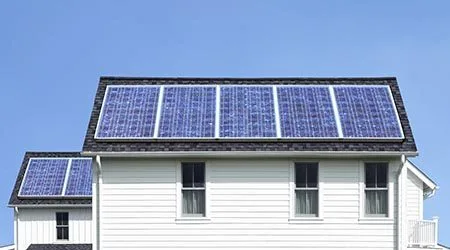
Own solar panels? Feeding your energy back to the grid could soon cost you
Here's how new recommendations by the regulator will impact your feed-in tariffs.
Read more…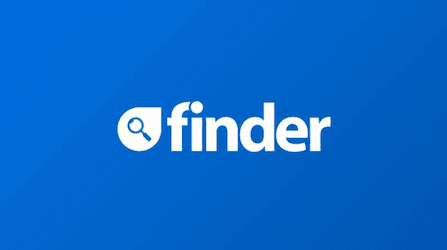
Solar air conditioners
Considering switching from regular air conditioners to solar air conditioners? Find out how.
Read more…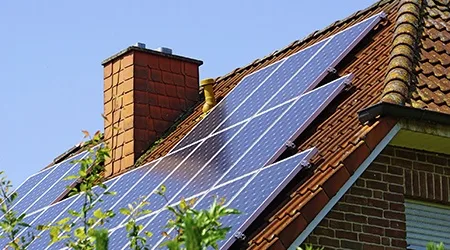
Compare electricity plans with solar feed-in tariffs
Compare feed-in tariffs and more to find a good value plan.
Read more…Solar Guides on Finder
Install Solar
General Guides
- Benefits of ground mounted solar panels
- Solar panels power outage
- How many solar panels do I need to power my home
- Building permit solar
Read more on this topic
-
Own solar panels? Feeding your energy back to the grid could soon cost you
Here's how new recommendations by the regulator will impact your feed-in tariffs.
-
Solar air conditioners
Considering switching from regular air conditioners to solar air conditioners? Find out how.
-
Compare electricity plans with solar feed-in tariffs
Compare feed-in tariffs and more to find a good value plan.
-
Energy Australia cuts solar feed-in tariffs
You might get less back for your contribution to the grid but don't panic, compare your rates instead.
-
Is buy now pay later a good option for solar?
Buy now, pay later seems like a great way to get an expensive solar system now and pay it off when you're reaping the benefits, but there is a catch.
-
The truth about energy discounts in Australia
Discounts or benefits aren't always straightforward. This guide explains what you need to know.
-
Full list of CEC-approved solar retailers
If you're looking to buy a solar PV system for your home, these retailers have been accredited by the Clean Energy Council as an approved solar retailer.
-
How long does it take to pay back your solar system?
Read about how long it took couples from Sydney, Melbourne and Perth to start saving money on their solar power investment.
-
How do I know that my solar panels are installed properly?
These signs help you know whether your panels have been installed professionally and correctly.
-
Solar power options: going on-grid or off-grid
Terms like on-grid, off-grid and grid-tied can lead to confusion. They essentially refer to whether or not you want to access the grid alongside your solar power service.
Lower your household bills
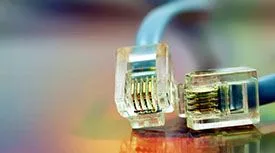
Filter by price, data and speed
Compare internet from over 50 providers in our broadband engine.

Finder Editor's Pick: Internet plans
Check out our select picks of the best plans available.

Replace your internet with mobile
Compare mobile broadband services, perfect for renters and travellers.
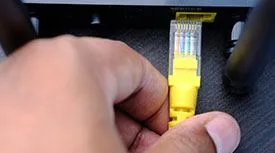
NBN on the cheap
Get an NBN connection on a budget with our curated list of plans.
Ask an Expert


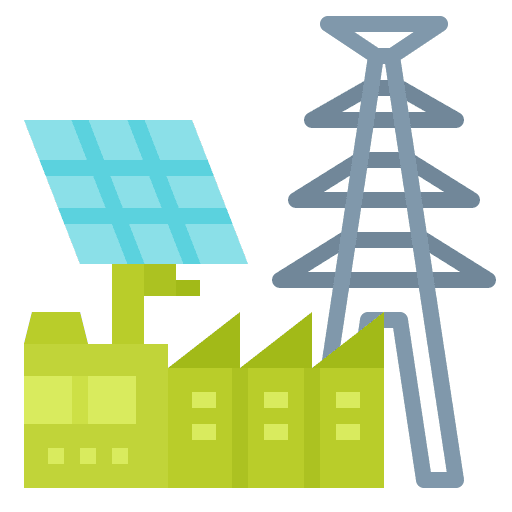




Can I have a list of feed in tariffs from companies?
Hi Margie,
Thanks for your comment and I hope you are doing well. While we review solar power providers in our pages, it’s helpful to know that we are unable to provide this on our site. It would be best to contact the customer service support of the solar power provider of your choice directly for further assistance.
Hope this clarifies and we hope they find a quick resolution for you!
Best,
Nikki
We live in SW Sydney and looking to install solar panels as we have a pool and ducted A/C. Can you point us in the right direction on provider comparison/s or is it best to speak with an energy broker, and if so, can you suggest any? We are currently with Red Energy but could/would change. Want to choose a reputable form for the panels as anecdotal evidence suggests many are here today and gone tomorrow – which is a major concern for after-sales service etc.
Hi Andrew,
Thank you for getting in touch with Finder.
You may start comparing your energy plan options in NSW. You may click on the ‘Go to site’ button or ‘Enquire now’ to be redirected to the provider’s official page to learn more about what they offer to new consumers like you.
I hope this helps.
Thank you and have a wonderful day!
Cheers,
Jeni
I have a residential home in Western Suburbs of South Australia and looking to install a ~5kw solar system. Could you send me a list of solar installation companies who may be able to assist. Also looking into the storage/battery side of things as well. Want to spend between $5000 – $10000
Hi Mark,
Thanks for reaching out.
You may go ahead and click on “More info” on the supplier above if you need additional details. Most of the suppliers may be able to take care of the installation but you may need to speak with their solar experts to get specialised advised.
You may also refer to our guide on how you can choose solar suppliers and installers.
Cheers,
Joanne
I am getting cold calls from companies wanting to instal solar panels on my leased business property, on a “rent to own” basis, with the overall costs purportedly slightly lower than my current energy bills. Generally overseas call centres. How do I find reputable local suppliers to quote?
Hello Belinda!
Thanks for your inquiry. :)
On this page, you’d see the list of providers we have per state under “Can I switch?”.
We recommend that you click which applies to your location. Afterward, it will direct you to the page where we have listed the distributors on that state. You can select the “Enquire Now” button of your chosen provider.
Alternatively, you can also check our energy page where you’ll find a form. Use this form to compare electricity plans and find a better deal for you.
Hope this helps.
Cheers,
Jonathan
How do I compare my existing provider to a potential provider?
Hi Luis!
I believe you’re trying to compare energy providers. If this is the case, you would be happy to check our list of energy providers.
On that page, you’ll find a table that lists your options. From there, you can then compare providers based on various details and features. Select the “More info” link to read our reviews. Once you’re done comparing, select the “Go to site” button to be redirected to your chosen provider’s website.
There’s a form on that page that lets you compare energy prices. All you need to do is specify your postcode, energy type, and others.
Hope this helps.
Cheers,
Jonathan